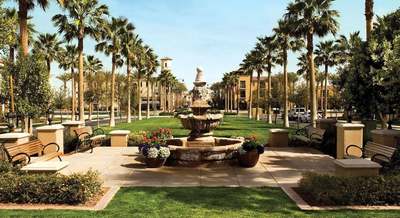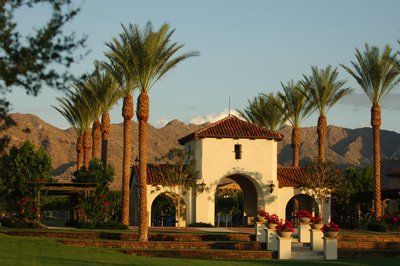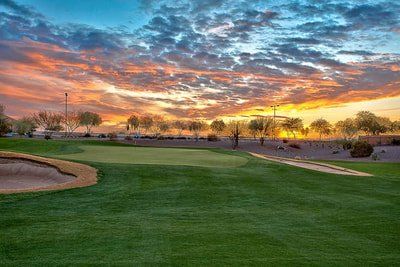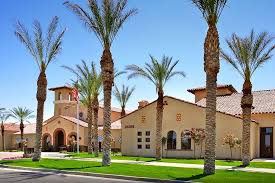Welcome To Buckeye
Progress & Growth
Founded in 1888 and incorporated in 1929 as a 400-acre town, Buckeye’s current land area of 600 square miles makes it geographically the largest city in Arizona. The cotton, alfalfa and maize fields are still here, interspersed with housing developments and booming businesses.
Today, Buckeye is experiencing tremendous growth including new residential and business development, and exciting ideas on becoming a model 21st century city.
Located just 35 miles west of Phoenix, Buckeye is convenient to work, sightseeing and an exciting nightlife, yet far enough away to retain a comfortable small town feeling. Residents can take advantage of offerings found in a metropolitan city and then return to the quiet comforts of home. Residents are proud to call Buckeye home and have found a great place to live, work, play and discover the best Arizona has to offer.
Population figures reflect the tremendous growth the City is experiencing. The growth is not just in residential development. Sundance Towne Center, Sundance Crossing, and the Market on Broadway are home to a number of small retail businesses and restaurants, as well as, large national retailers, banks and restaurant chains and retail outlets. The South-west corner of Dean and Yuma is home to the Justice Court, Buckeye Police and Fire Departments, and the Coyote Branch Library.
Educational opportunities include the West-MEC campus, the ASU Entrepreneur Innovation Center, and the Grand Canyon University bachelor degree program. Estrella Mountain Community College Buckeye Educational Center offers classes in what used to be the original Buckeye Union High School.
Each day, more than 69,000 cars pass through Buckeye on Interstate 10, making the frontage an ideal location for digital monument and billboard signage opportunities. Buckeye is ready and prepared for the future as we continue to grow!
Buckeye’s Historic Main Street
Monroe Avenue, once old U.S. Highway 80, is Buckeye’s historic main street. A stretch of the original roadbed is still in use where Monroe Avenue dead ends into Apache. Old U.S. Highway 80 was originally called the Dixie Overland Highway or the Broadway of America. Before 1926, developers and towns scrambled to be on a coast-to-coast route. The Dixie Overland Highway was the first all-year, coast-to-coast roadway. Since many of these highways shared the same roadbed through parts of the country, people began to be confused by the colorful names given these routes. In 1926, the Federal government stepped in and replaced the names with a numerical system. Old U.S. Highway 80 started at Tybee Island, Georgia and crossed the country entering Arizona near Douglas, continuing through Tucson, Phoenix and Buckeye, south to Gila Bend, and exiting the state at Yuma. Its western terminus was San Diego.
Education
Arizona is a right to choose state for education. Parent’s are provided the right to choose from a wide variety of school options, including public, charter, private, online, or home education. Expanding school choice is the single best strategy for improving education for all children and the State of Arizona proudly supports this initiative. Arizona is a national leader in providing parents with these options.
And living in the City of Buckeye is no exception...offering 9 Public school districts, a variety of private and charter schools, and opportunities for career-directed education through Maricopa Community College District and West-Mec, it is obvious education is a priority in our community.
Environment
In spite of the heat and minimal rainfall, the Sonoran Desert is one of the most diverse ecosystems in North America. Among the wildlife living in the Sonoran Desert are mountain lions, bobcats, javelina, mule deer, coyotes, ring-tailed cats and even bighorn sheep. Smaller creatures such as gila monsters, desert tortoises, roadrunners, quail, jackrabbits and cottontails, many of which are easily spotted, thrive here.
A wide variety of desert plants ranging from mesquite and palo verde trees to brittlebrush, and of course the mighty saguaro, happily call the desert home. Cacti and creosote flourish, along with a wide array of wildflowers making their annual debut in early spring, and again occasionally after the beginning the monsoon.
The diversity and quantity of birds migrating through each year make bird watching one of the most popular activities in the desert. Riptarian areas provide the best backdrop for viewing raptors, cardinals, phainopepla, wrens, orioles, curve-billed thrashers, and of course doves. In Buckeye, you may see them at Robbin’s Butte Wildlife Area, White Tank Mountains Regional Park and Skyline Regional Park.
Weather
Living in the surroundings dominated by a desert climate is an adjustment for many new residents. Buckeye sits in a micro-climate somewhat different than Phoenix, with less rain than the Phoenix average, higher summer temperatures, cooler winter nights, and more days of sunshine.
Phoenix average spring temperatures range from 48 to 72 F and summer temperatures range from 85 to 108 F. Annual precipitation is 7.6 inches; and the average is 36.4 days with precipitation. The annual average is 325 days of sunshine. Monsoon season, bringing powerful rain and dust storms, occurs between mid-June and mid-September. Humidity ranges from a record low of two percent to as high as 78 percent, with the annual average at 50 percent in the mornings and 23 percent in the afternoons. July and August are the months of highest afternoon humidity due to monsoon.




